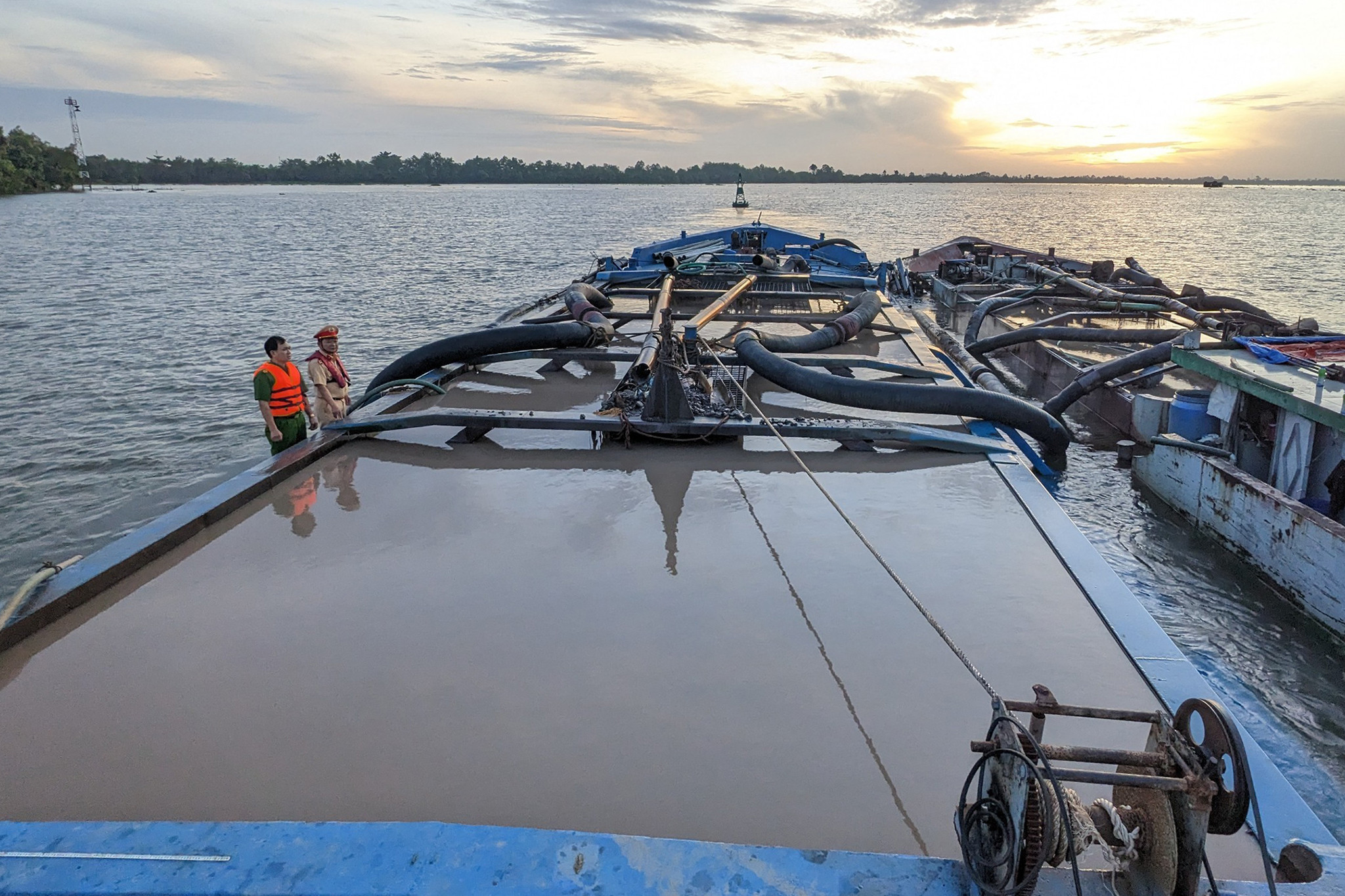
The result of the auction for the right to exploit three sand mines in Hanoi, which lasted a record time, from 9 am November 5 to 6 am November 6, has triggered worries among the public. Overly high sand prices will burden the state’s infrastructure development and people’s home construction activities.
In the case of the Liem Mac sand mine, the reserve that can be exploited is 510,000 cubic meters, and the winning price was VND410 billion, or 200 times higher than the starting price. As such, the sand price of the mine is VND803,900 per cubic meter.
Meanwhile, the winning price of Chau Son sand mine with the right to exploit 700,000 cubic meters is VND400 billion, or 137 times higher than the starting price. The commercial sand price of the mine is VND571,400 per cubic meter.
As for Tay Dang – Minh Chau mine with 5 million cubic meters for exploitation, the winning price was VND884 billion, or 46 times higher than the starting price. As such, the sand price is VND176,800 per cubic meter.
Observers noted that the prices are just estimates, which don’t include other costs, including exploitation, labor and transportation. Also, miners will have to pay tax, tens of percent more.
As such, Lien Mac sand price delivered on construction sites would be around VND1 million per cubic meter, an unbearably high price to both the state and people.
Hanoi, like other localities throughout the country, is executing construction works to solve one of the three bottlenecks for economic development, which is the lack of infrastructure.
Developing Belt Road No 4 in the capital city and neighboring localities is one of the works of the development plan. Hanoi and provincial authorities are hurrying to implement the project, but they are facing problems, including sand shortage.
About 1.87 million cubic meters of soil and 5.53 million cubic meters of sand are needed for the project. However, local authorities have to struggle because the of a soil and sand shortage, while the prices are very high.
Hanoi’s Vice Mayor Nguyen Trong Dong said the actual backfill price is much higher than the approved price level (VND250,000 per cubic meter vs VND170,000).
Prior to that, the Hanoi authorities had raised the unit prices of backfill materials three times, from VND67,000 per cubic meter to VND170,000. However, the latest price is still lower than the market price.
Observers noted that the VND170,000 per cubic meter price is even lower than the lowest auction winning price of VND176,800 for Tay Dang – Minh Chau mine.
So, if buying sand for the Belt Road No 4 and other infrastructure works in Hanoi in the market, the construction costs and the required investment capital of projects will be much higher than initially estimated.
In Vietnam, sand and road construction materials are getting increasingly scarce. The PM has many times sent telegrams to local authorities, requesting measures to ensure sufficient materials for the embankment for the North-South Expressway and other backbone routes now under construction.
Some mechanisms have been applied to implement the directions. Some mines have been opened to provide materials at prices lower than market prices to some certain projects. When the projects get completed, the mines will be closed.
The biggest problem is that the unit prices set by the state are always much lower than the market prices. The state cannot be ‘generous’ to spend money from people’s tax payments, while mine owners only accept to sell materials at market prices, not state-fixed prices.
As a result, many state- and private-run projects have become alarming, while contractors incur losses.
Contractors, when drawing up construction plans, estimate material prices at low levels, but when executing projects, find the real material prices much higher than estimated. However, they cannot adjust the approved prices, because the unit prices set by the state are fixed.
This explains why many contractors ‘give up the game’, while others decide to ‘pay back the projects’ to the state after they win the bids.
According to Minister of Natural Resources and the Environment Dang Quoc Khanh, surveys have found that the volume of sand arriving in Tien and Hau Rivers in Mekong River Delta has dropped by 70 percent because of Mekong upstream construction works.
Tu Giang